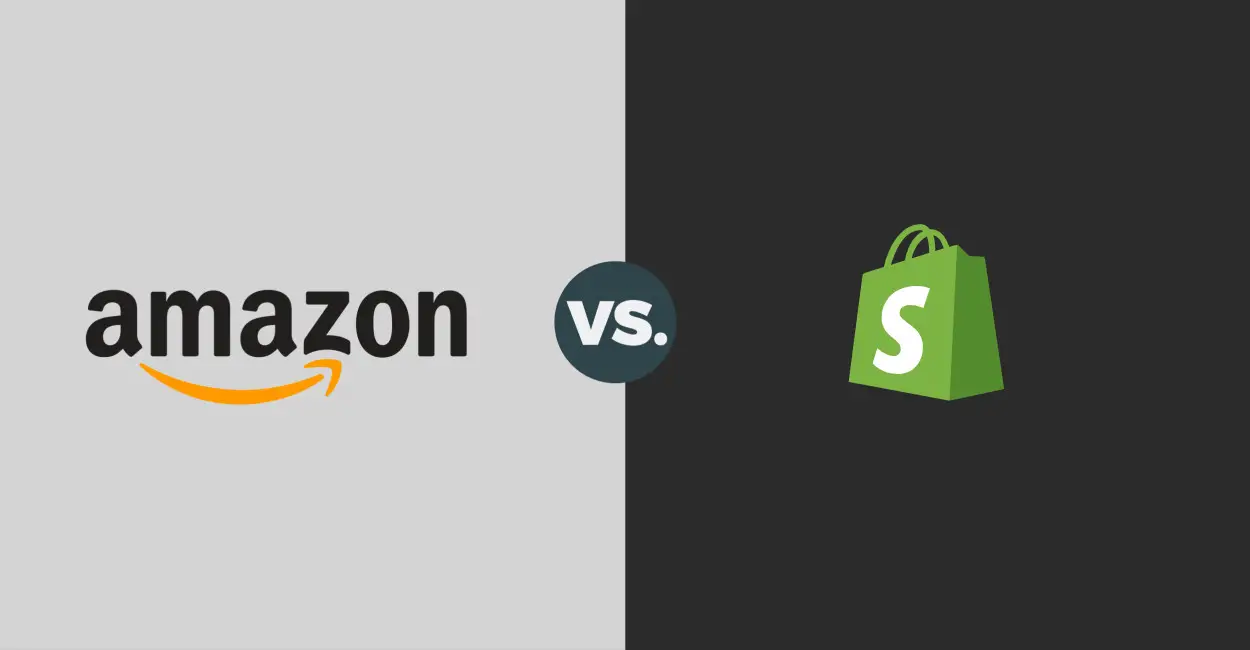In recent years, all the businesses are moving online. Especially small businesses have found a wide reach after opening their online shop.
If you are thinking about moving your store online or opening an online business, then you have to decide the platform you are going to sell your products. So let’s learn about Amazon vs Shopify.
And you would know the two big names Amazon and Shopify. Your brain might be working high time trying to figure out the difference between them and to choose the one most suitable for you.
But in this article, we will save all the confusion. We are going to compare these sites in detail. And by the end, you will know which one suits you best.
Amazon is an online marketplace that lets you sell your product to their customer for a small profit percentage. Amazon has won the confidence of people over the years. It has more than 150 million visitors looking to buy products. And all of that traffic will be yours to display your product.
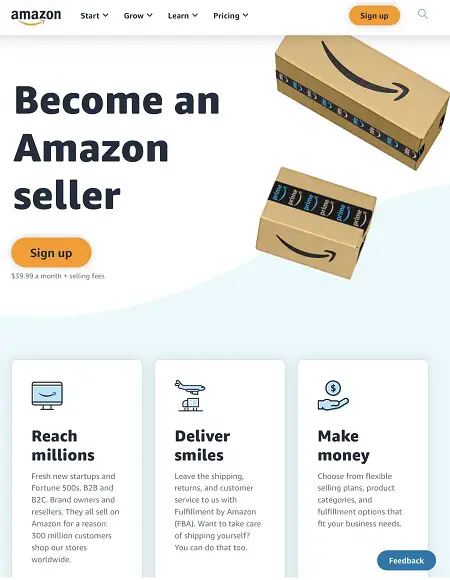
Shopify is an all-around e-commerce platform that will help you set up your custom online store. Shopify has set up more than 600,000 businesses earning a net profit of more than $80 billion through them. Shopify has a wide range of tools to help you run a successful online store.
From the above introduction, you will know that the two platforms are high profile and profitable. But you have to decide which is more suitable for you. And we are going to help you make that choice.
Amazon vs Shopify
Ease of Use
The first thing anyone looks at when setting up their eCommerce store is how easy it is to set up and manage it. Let us compare the ease of use in Shopify and Amazon.
Setting up
Setting up your online store is very easy with both Amazon and Shopify. All you have to do is enter the required credentials and choose a plan.
Your website can be up and running under an hour. Only with Shopify you can also choose the theme, add Logo and brand name.
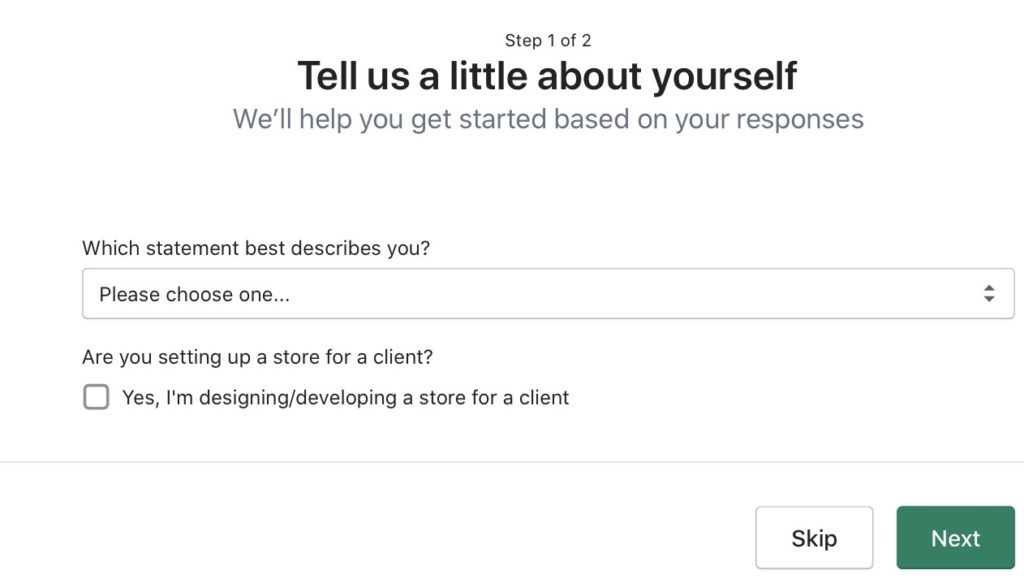
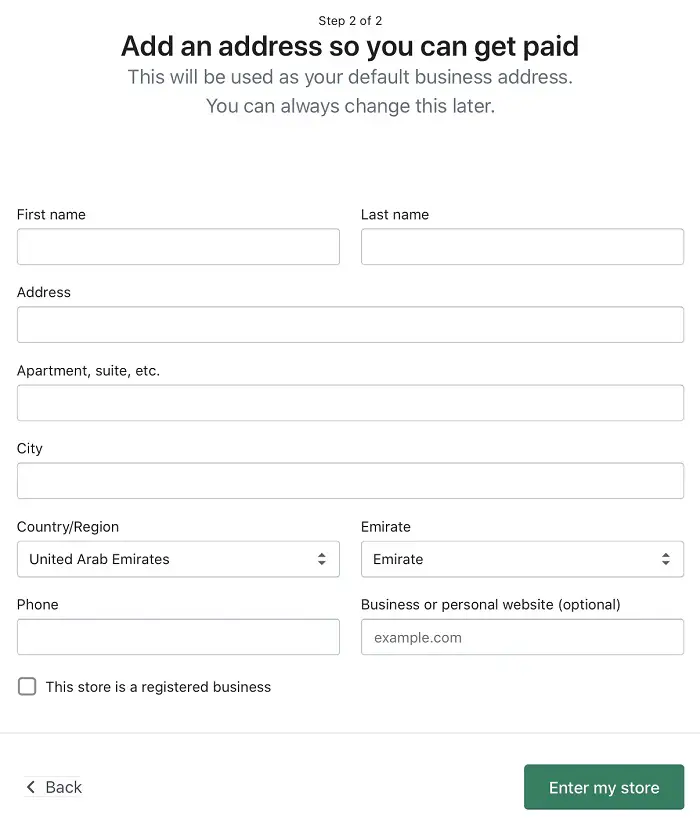
Adding Products
Adding products to Shopify is a breeze. You will only have to add the information you want to add. For example, if you only want to display the image of the product, name of the product, its price, and description.
Then you can stop there. If you want to add dimensions, you can add them.
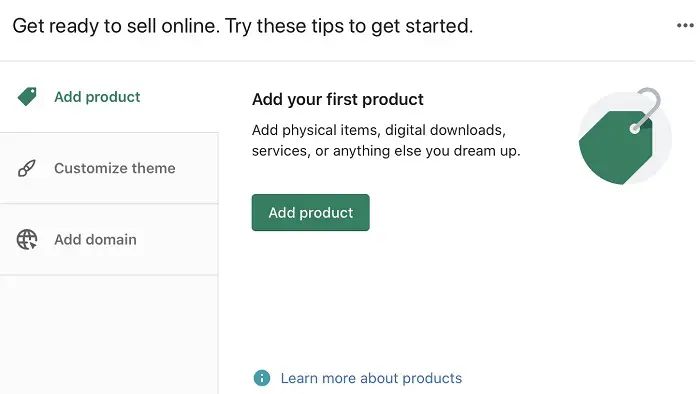
But adding products on Amazon may get a little bit tricky. They have a list of information you have to provide for a single product. The information can be pages long.
It will only allow you to upload the product if all the boxes are filled. In addition, the information too can only be in a certain format.
Handling the Backend
Once your product is uploaded, there is the process of processing the orders. You have to store them, pack them and ship them.
Amazon has an option to handle all the backend processes. It will collect the product from you, pack it and ship it all with high security.
On Shopify, you have to take care of the backend process too. You have to manufacture the product, store it safely, pack it properly and then ship it with a trusted company.
However, you can hire a third-party service provider to do drop shipping or be your logistics service. But this will cost you an extra amount.
On comparing the ease of setting up, navigating the platform and the backend services Amazon is very easy to use and manage. All you have to do is set up your account and Amazon will take care of all other services.
Marketing
To launch a successful store it is not enough to just set it up, you have to reach customers too. And finding customers is not an easy feat. You have to do target marketing and build trust.
Amazon has become a household name. It has huge traffic that visits their website. It has also built an unbreakable trust among its users for secure payment and shipping.
So Amazon is used by the customer to an extent that you can say ‘who doesn’t use Amazon these days?’.
If you sign up with Amazon as a seller, you can tap into its huge customer base for a profit percentage. You can concentrate on your product rather than marketing it.
Even though Shopify helps you build a better website than Amazon, it doesn’t come with its customer base. With Shopify, you have to market your website. You have to check SEO, plagiarism, keywords all by yourself.
But Shopify does provide you top-notch marketing tools, analysis, and reporting tools to market your website. But they are only tools, the work is always yours.
You have to learn how to utilize them correctly. So reaching your ideal audience may take a little longer if you use Shopify.
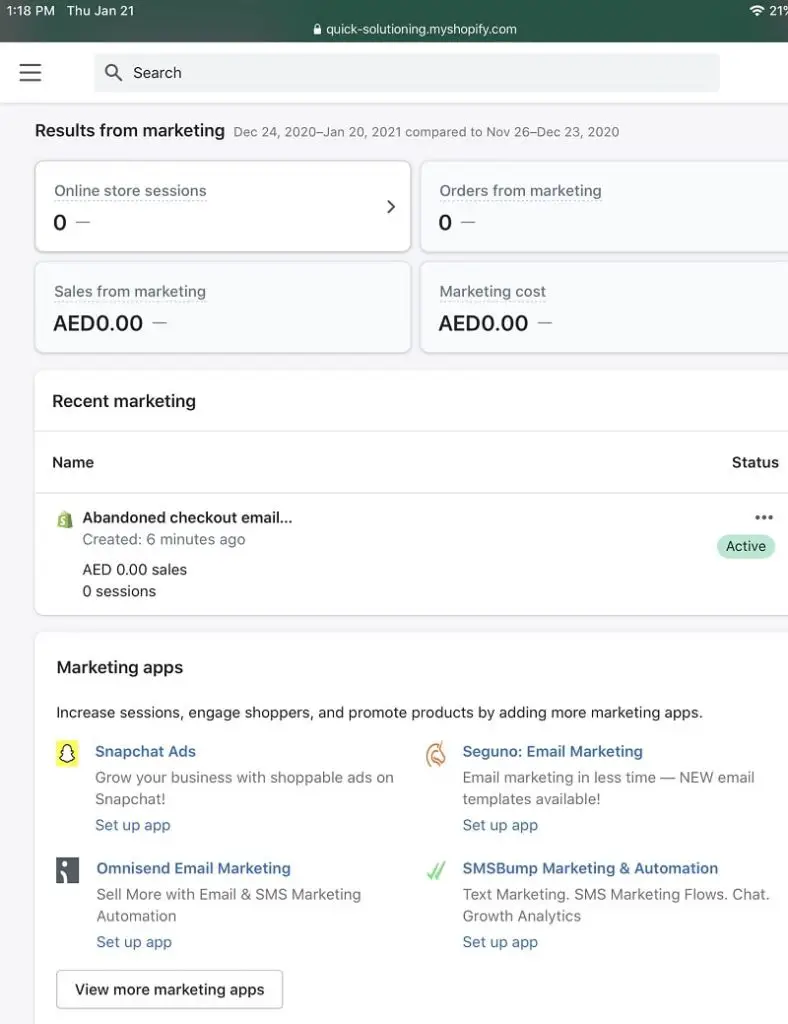
Marketing is where Amazon and Shopify differ the most. And that is a place where Amazon is undoubtedly more convenient than Shopify.
Flexibility
When it comes to a business website, it has to have flexibility. Flexibility to choose the interface, to set the price of your product, and on terms and conditions.
Amazon has a tight set of rules when you want to sell on their platform. Your product will be suspended if you don’t adhere to their rules.
Even though you can price your products as you please, Amazon will suggest a cheaper product to the customer.
So you have to price your product based on the average selling price of the product on Amazon. And you have little to no freedom in the interface. You have to stick with the standard Amazon interface.
On the other hand, there is Shopify. Shopify has flexible terms and conditions. You only have the conditions you set for yourselves. And you have full freedom to price your product.
People come to your website because they like your brand and will not mind your price. Or be confused by cheap prices.
And you have a lot of customization available for the design interface. You can add your logo, brand name. And you can put them all over the place.
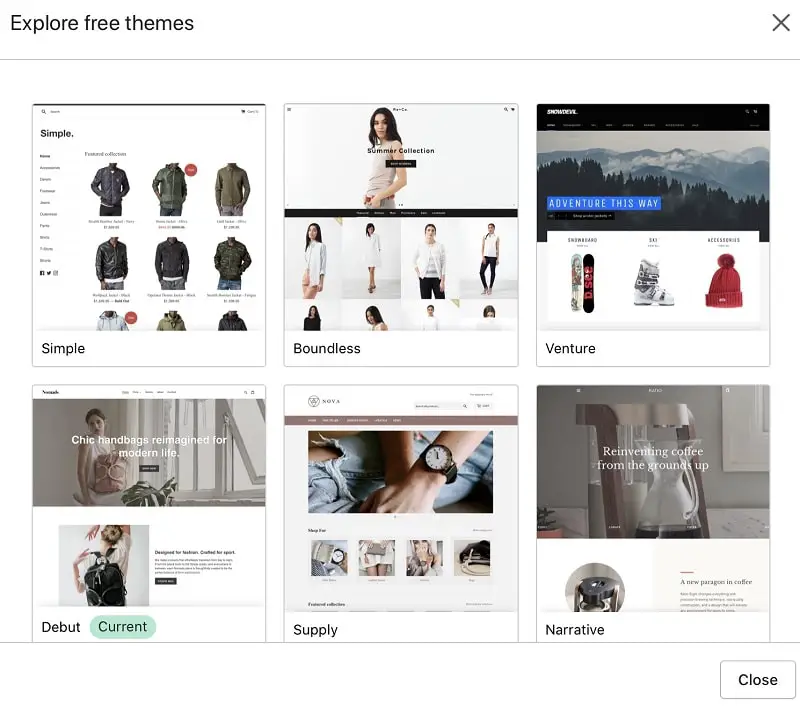
When it comes to flexibility, Shopify remains unbeaten for all the freedom it gives to the vendor.
Pricing and Plans
Amazon has two payment plans:
- They have a professional plan priced at $39.99 per month with commissions and referral fees
- The individual plan is free but you pay $0.99 for every single product you sell using the platform.
- You will have additional transaction fees of 2%.
- If you have an Amazon fulfillment account you will be charged fulfillment fees ($2.5 to $140) and inventory fees ($0.68 to $2.40) per cubic foot.
You will get this with a 30 days free trial option. There won’t be any additional or unexpected charges or fees.
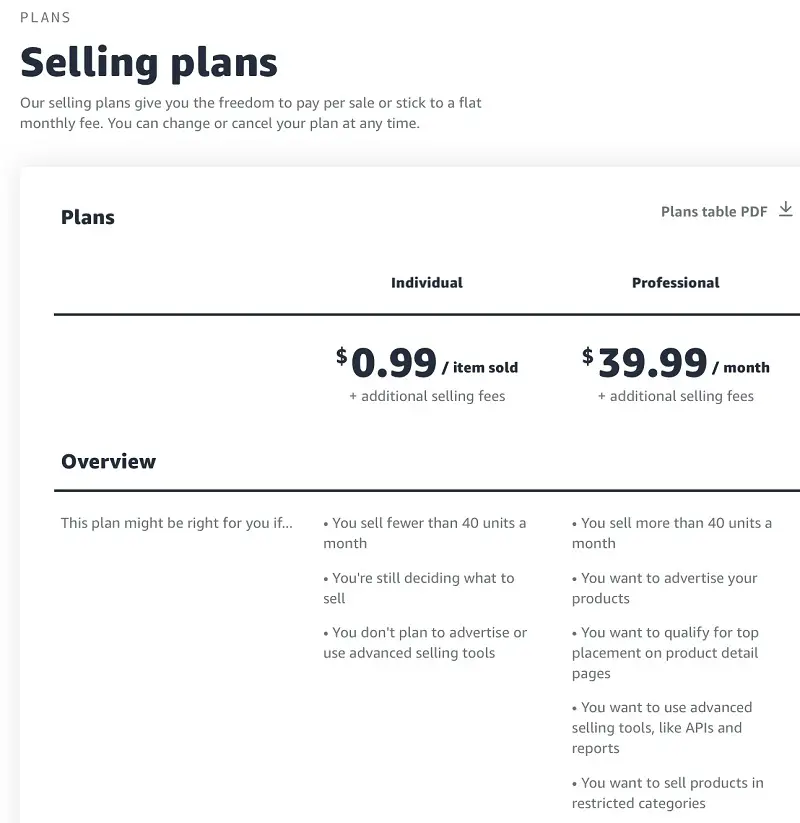
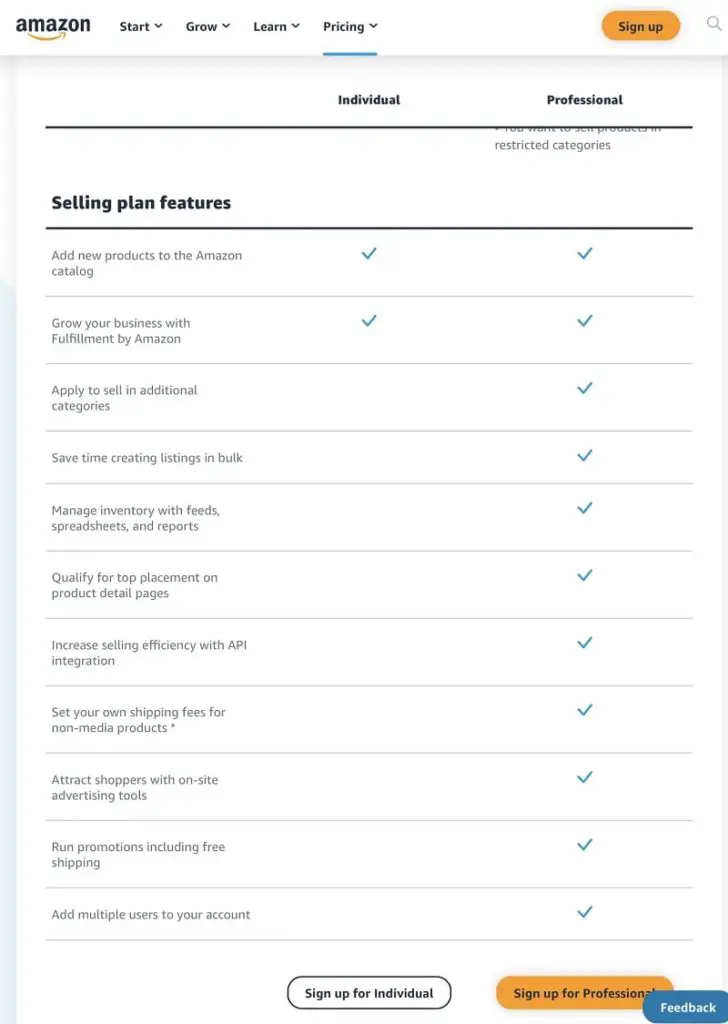
The Shopify has three plans:
- The basic plan comes at $29 per month plus a transaction fee of 2% for third party payments.
- The Shopify plan costs $79 per month plus a 1% transaction fee of 1% for third party transactions.
- The advanced Shopify plan comes at $299 per month with a 0.5% transaction fee for third-party payments.
- Additional to this you will get extra cost for add-ons for marketing, analytical reports, and the integration of third-party services.
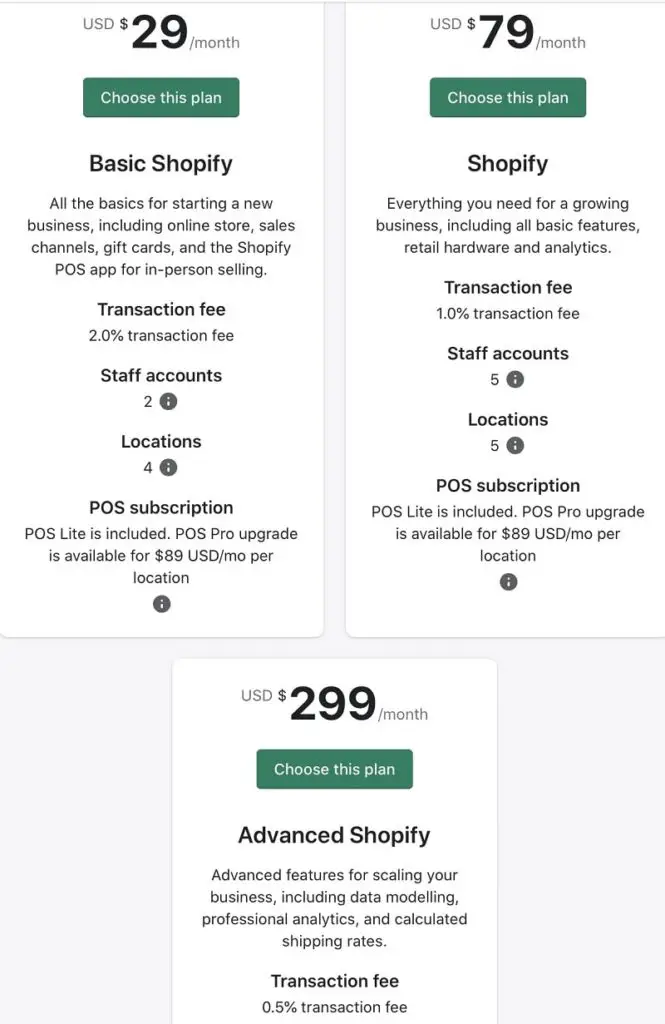
You will have a 90 days trial to choose the best option suited for you. And you have to cover all the additional and extra charges that come with the business.
Payment Gateway
As an e-commerce store, it is very important to have flexible payment gateways. Sometimes the only reason a customer may abandon a website is that they can’t find a suitable payment option.
Amazon has a fixed gateway accepting credit cards, debit cards, online bank transactions, UPI, Amazon Pay, Apple Pay, etc.
Amazon has a functional payment gateway that allows your customer to pay with different means. But it doesn’t accept payment from PayPal or Stripe. And you cannot customize it too. Thus Amazon has a function but rigid payment gateways.
Shopify has a wide and flexible gateway. You can have a standard gateway and also add PayPal, Stripe, etc. to it as an extension.
Shopify also has their own gateways Shopify pay this saves all the transaction fees. In addition, Shopify also allows you to collect tips and donations from your customers.
When compared, Shopify has more flexible and multiple options to accept payment. With that said, it doesn’t mean that Amazon’s payment gateway is anyway less functional.
Attractive Interface
The first impression is the best impression. In order to grow as a brand, you have to have your identity stamped in an attractive interface. And that just doesn’t happen with Amazon.
On Amazon, their logo is stamped all over the place and you get a mention. And their interface is pretty uniform and monotonous. You don’t have much choice with Amazon.

However, Shopify on the other hand has many customizable themes for your website. You can add your brand name and logo. And you can use your chosen color theme.
You can have a formal or informal storefront. For example, if you are selling customized art, then you don’t need a cart. You need a profile. But at the same time, you need a payment gateway.
Shopify allows you to customize the website according to your need. And so Shopify is the winner when it comes to an attractive interface.
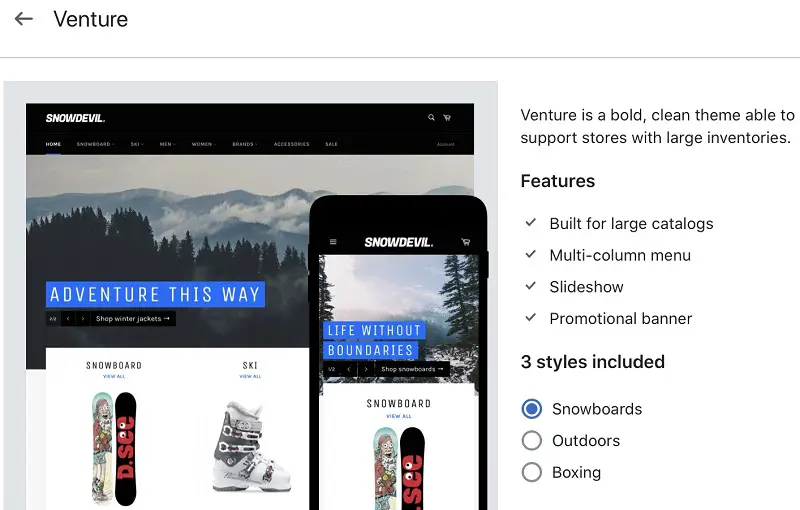
Customer Service
It is very important to know that the ecommerce platform you choose will have your back. In Amazon, you have efficient customer service for your customers.
Your customers will feel safe buying your products. However, for a seller, Amazon is not as efficient. A seller has to request a call from Amazon customer support. And they will respond within 24 hours.
But Shopify has 24*7 customer support through call, live chat, and advance support like tutorials and documentation.

When it comes to Customer Service as an eCommerce platform Shopify has your back more than Amazon. That is not to say Amazon support is lousy. They are very attentive.
The only drawback is that they are not available right away. But with Amazon, you have access to a lot of support resources online that can help fix your problem.
Ecommerce Tools
One of the key features of selling products online is the list of features the platform provides for us. Let us compare the unique features of Amazon and Shopify.
The unique features of Amazon are:
Amazon fulfillment program (Amazon FBA)
This program gives you access to its prime members for more sales at an extra cost. In addition, Amazon handles the storage, packing, and shipping of your products.
Thus you can just concentrate on producing high-quality products. And Amazon will take care of the rest.
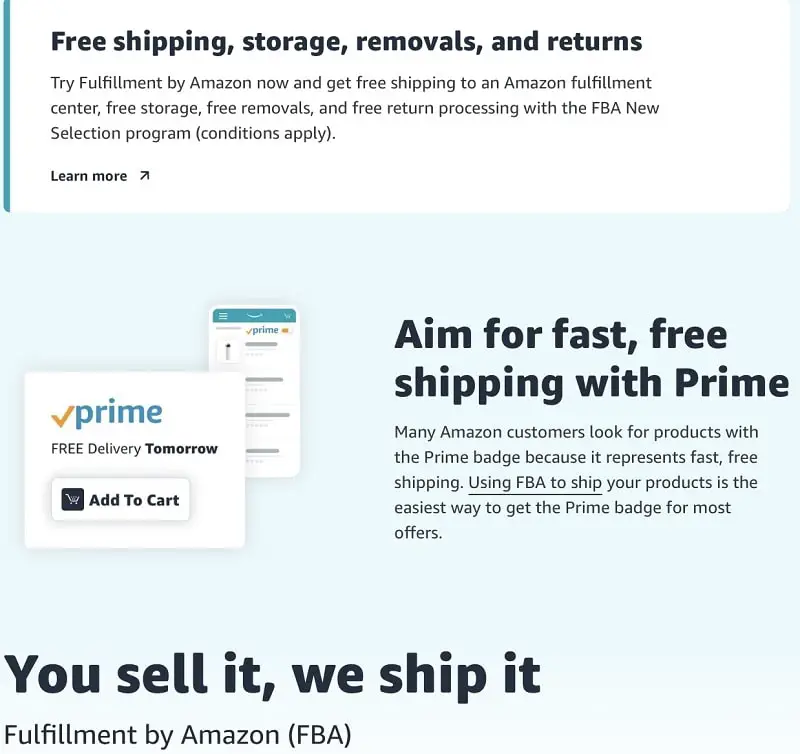
Amazon SEO
Amazon has a strong SEO strategy. Almost 54% of customers started their online product searches directly from Amazon. While Google is at 46%.
Amazon has a stronger SEO strategy than that of Google. And that’s a wealth to take advantage of.
Amazon Associates Affiliate program
Amazon supports affiliate programs. That is it allows third parties like bloggers, influencers to sell your products relevant to their niche.
For example, if you are selling a mobile phone. Amazon allows a tech review blogger to use an affiliate link to your product. This you have even more reach.
Amazon Handmade
If you want to sell your handmade items like crafts, home decor, regional souvenirs then Amazon has support for that too. It will avail their team to collect the item from your home and deliver it to the customer.
The unique features of Shopify are:
Abandoned cart recovery
Shopify allows you to send reminders to your customers if they quit your website without checking out the products from their carts.
Powerful inventory system
Shopify allows you to build a powerful inventory of products. You can add titles, sort them, add bar codes, unique identity numbers. This will help you keep your inventory organized.
Multi-channel selling
Shopify allows you to sell on multiple platforms like Facebook, Blogs, Instagram, etc. This will help you convert your social media followers into paying customers.
Tax and invoice generator
Not everybody is strong in calculating taxes and producing invoices. Shopify has various tools to assist you with that like tax calculation, bar code generation, shipping charge calculation, etc.
App integration
Shopify allows you to integrate your website with mobile applications. The users can visit your products from the application and browse through them with ease.
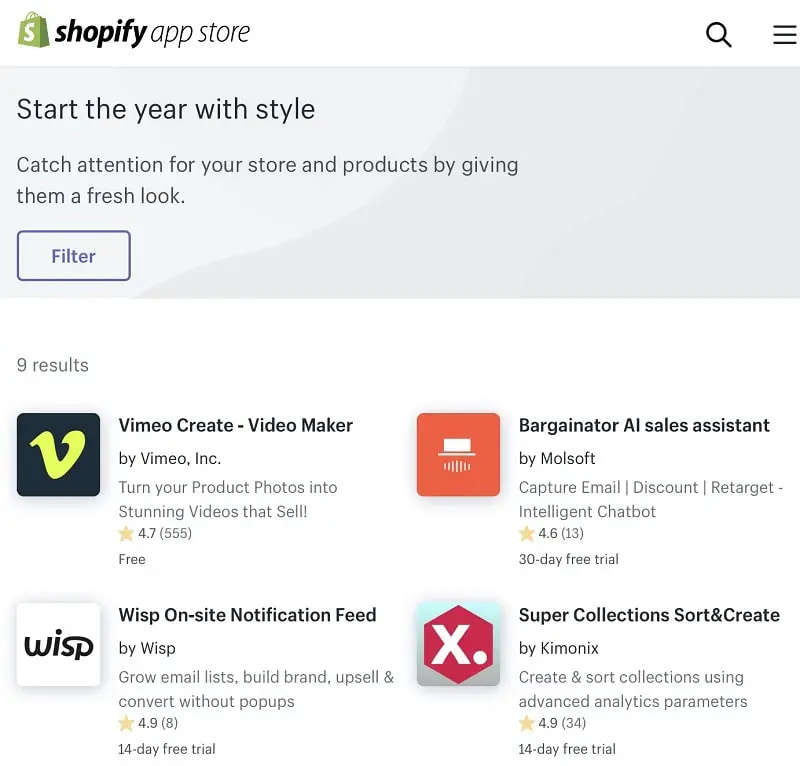
Analysis and reporting tools
Shopify has some analytical and reporting tools to monitor the performance of your site. However, this tool is not available for the basic plan. It is only available for the pro and business plans.
Extra features
It has many additional features like tipping, donation, flexible shipping options, etc. And you can add many customized add ons and third party user service for extra costs.
Drawbacks
After seeing all the strengths of both platforms we may think that these platforms are perfect. But like all the things, they have their drawbacks too. Here let’s compare both:
The drawback of Amazon are:
- Amazon has huge competition. Amazon has hundreds of registered sellers and you are competing not only with local vendors but also with international ones. So the completion is quite overwhelming.
- Amazon has a rigid structure. Amazon has almost no flexibility in design. You cannot sell if you don’t adhere to their strict rules.
- Amazon does not allow branding. You cannot personalize your storefront or your products on Amazon. Your brand will be given very little place to be displayed.
The drawbacks of Shopify are:
- Shopify can be more expensive. In addition to the plan offered by Shopify, you will need more addons and not to forget the cost of backend services. All costs noted, Shopify is more expensive than Amazon.
- Shopify has a learning curve. In order to utilize Shopify to the maximum, you have to research and learn new strategies. And it involves lots of trial and error. This will take time and patience which many do not want to spend.
- You have to take care of all the process by yourself. From one to end, you will be handling production, marketing, processing, and shipping all by yourself. That can be hard to manage.
Conclusion
Both Amazon and Shopify are at the top of their games. They provide unbeatable services to their customers. However, they both have their strengths.
Amazon has a strong customer base and trust it can offer to the sellers. In addition, it takes care of all other backend services through its fulfillment program. If you are new to the business and want to sell products hassle-free, then Amazon is your best bet.
Shopify allows freedom to the sellers to customize their site, price their products, and flexible payment gateways. And you can add many extensions for an extra cost
If you have an existing customer base from other sources like social media or if you want full control over the website and the products you sell, then Shopify has a wealth of tools for you.
Once you are clear about what you want, you can choose the best service between the two. Or even integrate Shopify and Amazon to get the benefits of both.
